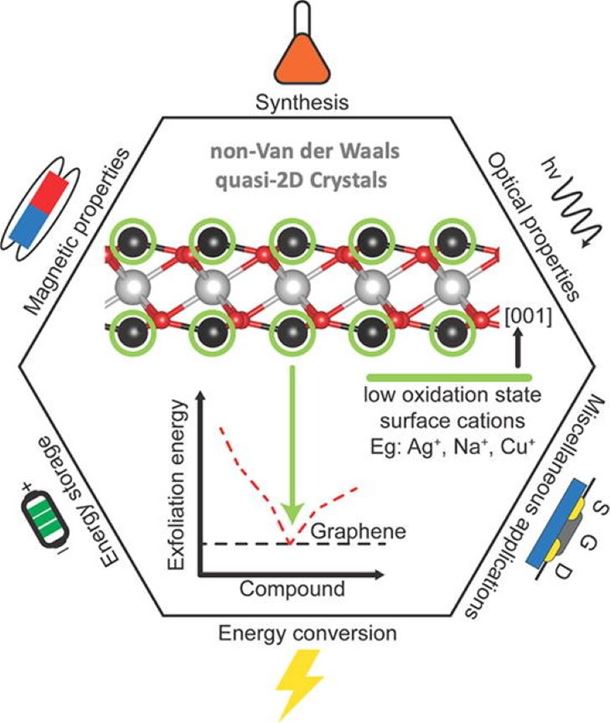Non-van der Waals quasi-2D materials; recent advances in synthesis, emergent properties and applications

Abstract
The discovery of novel materials that are stable at ambient conditions with emergent functionalities is a pressing need of the 21st century to keep the pace of social and technological advancement in a sustainable manner. Nanotechnology and nanomaterials are one of this kind and the current era has already witnessed several groundbreaking discoveries of materials and disruptive technological advancements. Starting from 0D fullerene, the invention of 1D carbon nanotubes, and most recently 2D graphene, all are allotropes of carbon, have brought a lot of research opportunities to understand different physical and chemical phenomena at atomic and molecular scales and to convert such properties into useful applications. Among them, 2D materials find special attention due to unique properties such as ballistic carrier transport, immunity from substrate effects and commendable in plane mechanical robustness. However, the library of such materials is limited, and one can see that most of the technically viable materials that are already industrialized in a large scale belong to the class of non-van der Waals materials. The effect of confinement in one dimension on non-van der Waals materials remains unexplored owing to the difficulty in fabricating these materials to the ultra-thin limit with large lateral size or area. Recent advancement of cleaving non-van der Waals bulk materials to their ultra-thin counter parts through the state-of-the-art liquid phase exfoliation approach leads to renewed research interest among scientific community. The existence of cleaving/parting planes in certain directions of non-van der Waals materials, where the bonding strength is relatively weak compared to other crystallographic directions of the bulk crystal, facilitate smooth exfoliation when subjected to shear force through suitable methods. Herein, we attempt to discuss the rationale of such methods in the synthesis of non-van der Waals 2D materials that possess cleavage/parting planes with a special attention to natural ores, and to review the recent progress made in non-van der Waals two-dimensional materials with a special emphasis on emergent magnetism, catalysis, energy storage, and optoelectronics and related applications.
See full text for more information.




